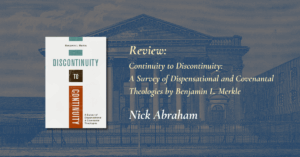1. The Death of the Library
I recently saw a picture in my Facebook news feed contrasting the appearance of the Louisiana State University Library with the locker room of its football team. The library appears in disrepair, with plastic sheeting draped from the ceiling directing leaking rainwater into trash cans. The locker room, as one would expect of a school in the SEC where football is often a substitute religion, is pristine and modern, futuristic even. The contrast between them, the picture suggests, speaks to the emphasis the university puts on its mission of education and its moneymaking, headline-grabbing pastime of NCAA sports. The halls of learning appear neglected while future hall-of-famers are embraced.
Now, there are practical reasons why a comparison between a university’s library and its sports facilities isn’t necessarily fair. Money donated to universities is most often earmarked, designated for particular purposes, and so major donors can, if they so desire, donate specifically to sports programs. Different schools and programs and jurisdictions fund their sports programs through different means, and so it may be the case that the money available for LSU’s futuristic football facilities was quite literally not able to be used for library facilities.
But college funding or the administrative priorities of major universities are not my primary interest in this essay. I am more concerned about the comments on the picture itself. Nestled between the lamentations over the state of the library and typical alumni praise for the successful football program were many commenters who shared a common and pernicious misconception: libraries are quaint relics of an archaic past, hardly necessary or perhaps even obsolete in our new digital age.
Arguments along these lines typically run something like this: resources that used to be housed in libraries are now widely available electronically. Physical books and journals are unnecessary when all of the information I could possibly need is available to me via the internet wherever I happen to be. Library buildings, therefore, are glorified study spaces on campuses full of better study spaces, and otherwise are indulgent wastes of space, time, and money. Staff could be cut, some commentors suggest, and that money allocated elsewhere, perhaps to even fancier football facilities if they had their wish.
The faulty assumption here is based on two premises: (1) physical media are obsolete in the digital age and (2) libraries exist primarily to house and curate physical media. These lead the commenters to the conclusion that libraries themselves are thus obsolete. Both of these premises, it turns out, are false. Physical media are as important as ever, and physical spaces that house physical media as essential as ever to the preservation and spread of knowledge. Let us deal with these in turn.
2. The Need for Books
First, physical media are as important as ever. This may sound hyperbolic, but I believe this claim is defensible for two reasons. The first is the novelty and consequent fragility of our new information ecosystem, and the second is the irreplaceable qualities of hard copy texts.
2.1 Ancient Texts
I would recommend any student of libraries and texts spend some time with the book Scribes and Scholars: A Guide to the Transmission of Greek and Latin Literature by L. D. Reynolds and N. G. Wilson. In brief, this sweeping study examines the historical shift in Western literature from oral to written traditions, where texts were first written, copied, and studied by scholars attached to libraries throughout the Mediterranean. Initially, these texts took the form of scrolls, rolled texts that were unwieldy and difficult to browse by nature. Even in this period, the authors argue, libraries served an essential role of reconciling divergent and decaying texts, passed around scholarly networks, copied with varying levels of accuracy, and compiled by those with scholarly motivations.
Reynolds and Wilson then track the development of texts from scrolls to codices, much like the sorts of books we are familiar with today. These bound tomes were an astounding, almost unprecedented innovation: they allowed for easy browsing, tables of contents, page numbering, all of the handy tools we take for granted in our reading today. The most prominent examples of these early codices are still housed in places like The Vatican and the British Library: collections of the Biblical text in its earliest complete (or nearly complete) forms known.
2.2 The Printing Press Revolution
A further great shift would occur historically when these codices no longer had to be produced by hand-copying, a laborious and time-intensive process, but could instead be printed en masse with the aid of movable-type printing presses. This era of printing has defined our relationship to texts, at least prior to the digital age, ever since. But the outsized impact of printed books on our lives and way of reading may obscure how novel and how fleeting our situation is.
As Jeff Jarvis argues in his The Gutenberg Parenthesis, the printing age is a “grand exception,” a brief moment that is already passing away. It is true, physical books are in many ways giving way to digital media, and the full impact of this move has yet to be felt or considered. This, too, is a key theme of Reynolds and Wilson’s work: the age of the codex, pages upon pages in the familiar sequence, took many thousands of years of human writing and copying to invent, and a thousand more to arrive at mass-produced printed books. Since that grand revolution in printing, a historical blink has passed, a mere diversion in the grand scheme of things, and yet, Jarvis argues, we are already moving on in some ways we may not be prepared for.
3. The Fleeting Digital (P)age
In our new digital age, where words are fleeting, files are emendable, and arguments over truth versus fact or “alternative facts” rage, we should not then jump to put our faith in fallible technology to act as the lone preservative of ancient texts or timeless truths. Some recent headline-grabbing examples of the shifting sands of digital media are exemplary, though only a subset of a larger issue: electronic versions of classic texts have been “stealth-edited” by publishers to align their contents with the sensibilities of newer readers.
Now, despite what the current furor would suggest, these sorts of edits to beloved texts are not new. The famed Hardy Boys and Nancy Drew books that many of us grew up reading had already been subjected to many decades of revisions, as had such Christian classics that haunted the shelves of many low-church homes such as the Elsie Dinsmore books. Retroactively revising even “classic” texts happens often, so why should we be particularly concerned about such edits in a digital age?
Imagine a conceivable world where fewer and fewer people purchase hard-copy texts. Libraries, as they exist now, are relic-houses scarcely frequented. Printed newspapers are a thing of the past. Major works, scholarly and popular, are primarily consumed via DRM-protected eBook files, housed in proprietary virtual libraries owned by companies such as Amazon and Adobe. In such a world, the information we possess is fundamentally fragile. Edits made to the texts we possess digitally but do not fully own may go unnoticed, and in the absence of a hard copy to compare against, may never be noticed.
Though the stealth-edits of classic fictional texts may seem unimportant to many, compare the similar phenomenon in news media, where previous iterations of headlines or substantive claims are vanished, sometimes with nary an editor’s note. In this environment, our texts and our research based on those texts are inherently fragile and unreliable, subject to the whims of corporate censors. Further, the information architecture that upholds our access to those texts and information is fragile as well: a single server’s failure can compromise our ability to access needed information, both practical and scholarly.
3.1 The Irreplaceable Good of the Physical Book
But the novelty of our moment and the fragility of electronic editions are just part of the problem with over-reliance on digital information. The fact is that digital media does not cleanly substitute for physical media because they lack some of the qualities inherent to physical texts. The experience of browsing physical shelves, for example, is different in quality and kind to browsing databases and search engines.
When I arrived at graduate school, one of the first pieces of advice I was given was this: find a topical area of interest and its location in the largest library available to you. Then, wander the stacks. Pull books you have never heard of off the shelf. Thumb through the table of contents, the citations, the index. Let the waves of information crash over you, at hand yet unknown, unknown yet knowable, accessible, touchable. I took this advice and I am a better scholar and person for it. Compare the experience of wandering the stacks to the experience of throwing a Google search or a Chat GPT prompt to the wind. As plagiarism-riddled, GPT-fueled undergraduate essays have demonstrated, research undertaken in this manner is often uninspired, uninteresting, and in its sterility is reflective of the machines it relies upon.
More than just the physical presence of a book in a library, the experience of reading a physical book is not cleanly replaced by an eBook. More than the utility of physical media for research, books embody things that cannot be, or at least cannot easily be, replicated in digital media. The tactile experience of turning a page, spatially locating a quotation, underlining a poignant phrase, dog-earring a significant passage, and returning to that same physical text time and again is categorically different than browsing an ePub file. This interaction with the text then contributes to what we might call the phenomenological depth of the text itself: I have treasured books signed by authors or by those who gifted me the books, or volumes I have carried with me through courses and research and papers for years. Those volumes are understandably precious to me for more than their information content. Though I can access many of them online, to lose them would be to lose something not present within the literal printed text. I have no emotional attachment to my large folder of PDF scans and electronic books.
3.2 The Irreplaceable Good of the Physical Library
I have argued first that physical media are as important as ever. But second and relatedly, the physical spaces that house, preserve, catalogue, and scan physical media are as essential as ever. While the ease of use of the Internet provides the illusion that the Internet and the files contained within are forever, the truth is that digital files are fragile and subject to similar degradation patterns as ancient physical texts. Where no electronic version of a text exists, one must be created from a physical copy. Where electronic copies degrade, new ones must be created and stored. As media scholar Maranke Wieringa argues, “Whereas non-digital media such as paper degrade slowly, a single corrupted bit can irrevocably harm a digital file. Digital media are thus on constant life-support.” The life-support mechanism for most ordinary sources for research and scholarship? Libraries and librarians trained to perform such digital preservation.
Ensuring the accuracy, sufficiency, and access to digital versions of texts thus requires ensuring access to their physical counterparts. The benefits of digitalization that the opponents of physical libraries tout are intrinsically intertwined with the existence of these physical libraries. It is the physical book in the stacks and the librarian who put it there, combined with wonderful technological advances in scanning technology, that allowed us to produce the PDF you prize. But when that PDF becomes corrupted, to whom will you turn? To the librarian, who maintains that hard-copy book in the stacks with care and craft that you decry. This means that the maintenance and support of skilled librarians and the institutions which train them is essential to the benefits opponents of physical libraries tout as making libraries superfluous.
The argument, then, that resources allocated to libraries ought to be moved elsewhere rests on the flawed assumptions that 1. All resources we could possibly need to access have been digitized, and 2. Maintenance of access to those resources could persist in the absence of libraries and librarians. Neither assumption is true. While it would be foolhardy for me to attempt to predict what the coming age that follows the “Gutenberg Parenthesis” will hold, I expect libraries to be necessary for a long time to come. Though I rejoice when I am able to access long-forgotten, obscure, expensive books through electronic catalogues, my ability to do so will never cleanly substitute for the physical counterpart, and in fact is reliant on it. We should not let our infatuation with the blessings of new technologies cause us to forget the advantages and necessities of the old on which the new rely. Treasure your books, treasure your libraries, and treasure your librarians.
Author
-

Philip D. Bunn is a Visiting Scholar at the Clemson Institute for the Study of Capitalism. He earned his Ph.D. in Political Theory at the University of Wisconsin-Madison and his BA in Government and Political Philosophy from Patrick Henry College. His research, focusing on technology and politics, has appeared in journals such as American Political Thought, Political Research Quarterly, and The Political Science Reviewer, and his occasional writing has been featured in The American Conservative, The University Bookman, and The Intercollegiate Review.
View all postsRecent Posts




